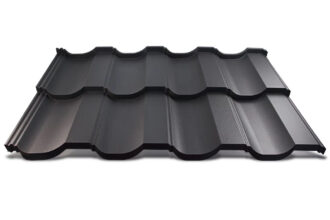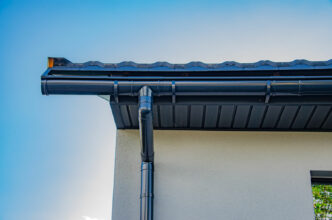Roof tiles are the most popular roofing material used in construction. They are available in many colours and shapes. This makes them look elegant on any roof. Let us take a look at the properties of these roofing materials, as well as their advantages and disadvantages.
Roof tiles – important information
Roof tiles are used in roof construction. Two basic types of roof tiles are distinguished by their material:
- ceramic tiles – made of brick clay,
- cement tiles – made of cement mortar.
The following types of ceramic roof tiles are distinguished:
- natural ceramic tiles – they are made of raw clay and have a porous and mat surface,
- ceramic tiles with engobe layer – they are covered with liquid clay, which can be coloured using red, brown, copper, as well as yellow, blue, green or black dyes,
- glazed ceramic tiles – they are coated with colourless or coloured glaze and are available in practically any colour.
Cement tiles can be made of mass-dyed mortar. Thanks to this, you can get virtually any colour and shade.
Roof tiles come in many and their respective types usually differ in the way they are installed. The most common types of roof tiles are:
- overlapping,
- plain,
- monk and nun,
- pantiles.
You can also come across their varieties.
Roof tile advantages
Roof tiles have many advantages, of which the most important are:
- hardness and durability – both ceramic and cement tiles form a durable and strong roof covering,
- are resistant to the load of snow accumulated on the roof or people walking on it – they neither bend nor break,
- they often feature special protective layers securing them from adverse weather conditions, such as frost, snow, rain or sun,
- roof tiles are widely recognized as the solution with the highest aesthetic value when it comes to roof covering,
- they are available in various colours and shapes,
- the colour does not fade under the influence of UV rays,
- roof tiles are used in modern construction but can also be installed on the roofs of old and historic buildings as well as on stylised houses,
- They provide roof covering with good acoustic and thermal insulation properties.
However, roof tiles also have some drawbacks:
- roof tiles can only be installed on steep roofs, i.e. roofs with a pitch of over 31°,
- single roof tiles are fragile – there is always a risk of chipping during transport or installation,
- the installation of this type of roof covering is relatively laborious and time-consuming,
- due to their high weight, they cannot be placed on a truss of low load capacity,
- this material is susceptible to water absorption, which is associated with a high load on the roof truss, as well as with the risk of moss or fungal growth.


